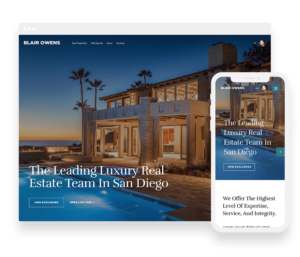Real estate SEO is an essential part of any real estate professional’s online strategy. It’s a process of optimizing your website to rank higher in search engine results, making it more visible to potential clients. The ultimate goal is to drive more traffic to your site, which can lead to more leads and closed deals. In this article, we’ll be discussing a powerful strategy for real estate SEO: Content Silos. By understanding and implementing content silos on your website, you can improve your search engine rankings and attract more leads. This article will provide you with everything you need to know to create a successful content silo strategy and take your real estate SEO to the next level.
Understanding Content Silos
In this section, we will dive deeper into the concept of content silos and how they can benefit your real estate SEO.
Definition of Content Silos
A content silo is a method of organizing and structuring your website’s content in a way that makes it easy for search engines to understand and for users to navigate. It involves grouping related content together in a logical and hierarchical manner, creating a clear hierarchy of information on your website. This makes it easier for search engines to understand the main topics and themes of your website, which can improve your search engine rankings.
How Content Silos Improve SEO
Content silos help to improve your real estate SEO by making it easier for search engines to understand the main topics and themes of your website. When search engines understand the main topics of your website, they can match your website to relevant search queries, which can lead to higher search engine rankings. Additionally, content silos help to improve the user experience by making it easier for users to find the information they need. This can lead to higher engagement, which can also improve your search engine rankings.
Types of Content Silos
There are several types of content silos that you can use on your real estate website. Some of the most common types include:
- Topic-based silos: This type of silo groups content together based on a specific topic or theme. For example, you could create a topic-based silo for “buying a home” and group all of your content related to buying a home together.
- Location-based silos: This type of silo groups content together based on a specific location. For example, you could create a location-based silo for “homes for sale in San Diego” and group all of your content related to homes for sale in San Diego together.
- Service-based silos: This type of silo groups content together based on a specific service. For example, you could create a service-based silo for “property management” and group all of your content related to property management together.
Examples of Successful Content Silos in Real Estate
- A real estate website that has a section dedicated to different neighborhoods with information, statistics, and properties in that area.
- A real estate website that groups all of their blog posts related to first-time homebuyers in one section.
- A real estate website that has a section dedicated to properties for rent or lease, and another section for properties for sale.
By understanding the concept of content silos, the benefits it brings to SEO, the types of silos that can be used, and examples of successful content silos in real estate, you will be able to create a solid strategy for your website.
Creating a Content Silo Strategy
In this section, we will discuss the steps involved in creating a content silo strategy for your real estate website.
Identifying Your Target Audience and Keywords
The first step in creating a content silo strategy is to identify your target audience and the keywords they are searching for. This will help you to understand what type of content to create and where to focus your efforts. You can use keyword research tools such as Google Keyword Planner or SEMrush to identify the keywords that are relevant to your business and your target audience.
Conducting a Content Audit
The next step is to conduct a content audit of your website. This will help you to identify any existing content that can be repurposed or optimized for your content silo strategy. It will also help you to identify any gaps in your content and areas where you need to create new content.
Creating a Content Calendar
Once you have identified your target audience, and keywords and conducted a content audit, you can create a content calendar. This will help you to plan and schedule your content in advance, ensuring that you are consistently creating and publishing relevant content.
Optimizing On-page Elements
It’s crucial to optimize on-page elements such as title tags, meta descriptions, and header tags to ensure that your content is easily understood by search engines and users, this is called On-page SEO. These elements should include your target keywords and accurately reflect the content of your page.
Building Internal Links
Internal linking is an important part of a content silo strategy. It helps to create a clear hierarchy of information on your website and makes it easier for search engines to understand the main topics and themes of your website. When creating new content, be sure to link to related content on your website to create a network of internal links.
By following these steps, you will be able to create a content silo strategy that is tailored to your real estate business, your target audience, and your SEO goals. By understanding your target audience and keywords, conducting a content audit, creating a content calendar, optimizing on-page elements, and building internal links, you will be able to create a solid strategy that will help you to achieve your SEO goals.
Implementing a Content Silo
In this section, we will discuss the steps involved in implementing a content silo on your real estate website.
Choosing a Silo Structure
The first step in implementing a content silo is to choose a silo structure that best suits your website and your content. There are several types of silo structures, including category-based, subdomain-based, and subfolder-based. Each structure has its own advantages and disadvantages, and it’s important to choose the one that best suits your website and your content.
Creating Pillar Pages and Cluster Content
Pillar pages are the foundation of your content silo and are the main pages that cover a specific topic or theme. They are often longer than other pages on your website and provide an in-depth overview of the topic or theme. Cluster content is the supporting content that provides more detailed information on a specific subtopic or theme. By creating a pillar page and cluster content, you will be able to create a clear hierarchy of information on your website, making it easier for search engines to understand the main topics and themes of your website.
Example Silo Structure for a Real Estate Agent Website
- Home page (Pillar page)
- Links to all other pages on the website
- Includes a search bar for properties, neighborhoods, and services
- Includes a call-to-action for contacting the agent
- About Us (Pillar page)
- Provides information about the agent and their team
- Includes testimonials from previous clients
- Includes a call-to-action for contacting the agent
- Properties (Pillar page)
- Includes a search bar for properties by location, price, and type
- Includes a list of featured properties
- Includes a call-to-action for contacting the agent
- Neighborhoods (Pillar page)
- Provides information about different neighborhoods, including statistics and amenities
- Includes a search bar for properties in specific neighborhoods
- Includes a call-to-action for contacting the agent
- Services (Pillar page)
- Provides information about the services offered by the agent, such as buying, selling, and property management
- Includes a call-to-action for contacting the agent
- Blog (Pillar page)
- Includes articles about real estate, neighborhoods, and the local market
- Includes a search bar for blog posts by topic
- Includes a call-to-action for subscribing to the agent’s newsletter
- Contact Us (Pillar page)
- Includes contact information for the agent
- Includes a form for submitting inquiries
- Includes social media links to the agent’s profiles
- Neighborhood 1 (Cluster content)
- Includes detailed information about the neighborhood, including statistics, amenities, and popular areas
- Includes a list of properties for sale or rent in the neighborhood
- Includes a call-to-action for contacting the agent for more information
- Neighborhood 2 (Cluster content)
- Same as Neighborhood 1
- Buying a Home (Cluster content)
- Includes articles and tips on the home buying process
- Includes information on the agent’s services for buyers
- Includes a call-to-action for contacting the agent for more information
- Selling a Home (Cluster content)
- Includes articles and tips on the home selling process
- Includes information on the agent’s services for sellers
- Includes a call-to-action for contacting the agent for more information
- Property Management (Cluster content)
- Includes information on the agent’s property management services
- Includes a list of properties currently under management
- Includes a call-to-action for contacting the agent for more information
Optimizing Images and Videos
Images and videos are an important part of any website, and they can also play a role in your content silo strategy. It’s important to optimize images and videos with relevant keywords and to include them in your pillar pages and cluster content. This will help to improve the user experience and make it easier for search engines to understand the main topics and themes of your website.
Leveraging Social Media and External Links
Social media and external links can also play a role in your content silo strategy. By sharing your content on social media and linking to relevant external websites, you can increase the visibility of your content and improve your search engine rankings. Additionally, external links to your website can signal to search engines that your content is relevant and authoritative.
By implementing a content silo on your real estate website, you will be able to improve your search engine rankings and attract more leads. By choosing a silo structure, creating pillar pages and cluster content, optimizing images and videos, and leveraging social media and external links, you will be able to create a content silo that is tailored to your website and your content.
Tracking and Measuring Success
In this section, we will discuss the importance of tracking and measuring the success of your content silo strategy and how to do it.
Setting Goals and KPIs
The first step in tracking and measuring the success of your content silo strategy is to set clear goals and KPIs (Key Performance Indicators). These goals and KPIs should be specific, measurable, and achievable. For example, you may set a goal to increase your website’s search engine rankings for a specific keyword or to increase the number of leads generated from your website.
Using Analytics Tools
There are several analytics tools that you can use to track and measure the success of your content silo strategy. Google Analytics is a free tool that provides detailed information about the traffic to your website, including the number of visitors, the pages they visit, and the time they spend on your website. Ahrefs and SEMrush are paid tools that provide detailed information about your website’s search engine rankings, backlinks, and more.
Identifying Areas for Improvement
Once you have set your goals and KPIs and are using analytics tools to track and measure the success of your content silo strategy, you can use the data to identify areas for improvement. For example, if you find that a specific page or cluster of content is not performing well, you may need to optimize the content or create new content to address the issue.
Optimizing for Voice Search
With the increasing popularity of voice search, it’s important to optimize your website for voice search. This includes making sure your website is mobile-friendly and that your content is easy to read and understand. Additionally, you should also optimize your website for long-tail keywords and natural language search queries.
By tracking and measuring the success of your content silo strategy, you will be able to identify areas for improvement and make adjustments to your strategy as needed. By setting goals and KPIs, using analytics tools, identifying areas for improvement, and optimizing for voice search, you will be able to create a content silo strategy that is tailored to your website and your content.
Recap of Key Takeaways
- Content silos are a powerful strategy for real estate SEO, helping to improve search engine rankings and attract more leads.
- To create a content silo strategy, it’s important to understand your target audience and keywords, conduct a content audit, create a content calendar, optimize on-page elements, and build internal links.
- Implementing a content silo involves choosing a silo structure, creating pillar pages and cluster content, optimizing images and videos, and leveraging social media and external links.
- Tracking and measuring the success of your content silo strategy is crucial, including setting goals and KPIs, using analytics tools, identifying areas for improvement, and optimizing for voice search.
By implementing the strategies outlined in this article, you can unlock the power of content silos to improve your real estate SEO and drive more leads to your website. With a solid content silo strategy, you can establish yourself as a leading authority in your local market and ultimately, close more deals. Take action now and start implementing a content silo strategy for your real estate website today.



